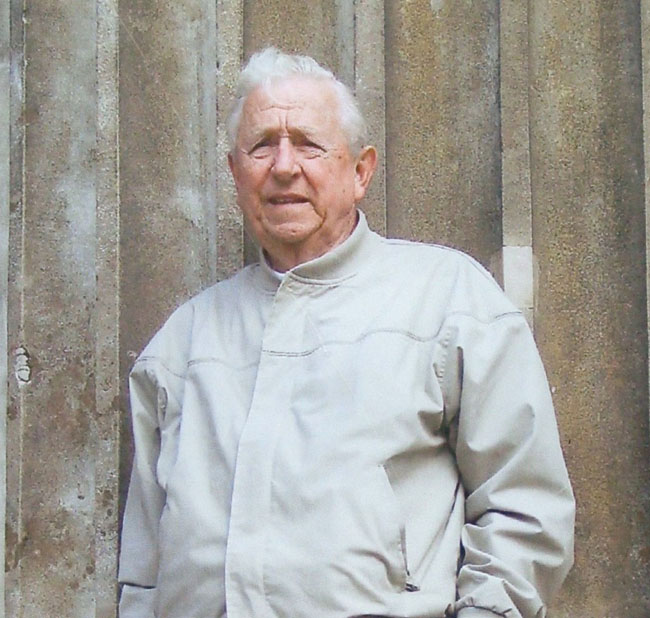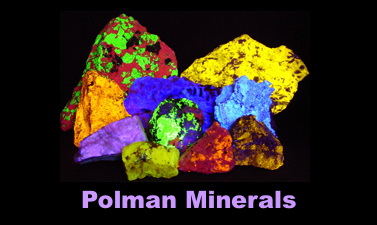Bob Jones Tribute

It is with great sadness that I must report the passing of a mineral legend. Mr. Robert W. Jones Jr. (Bob Jones) passed away on May 31, 2024, at 97 years young. Not only was Bob a great friend of mine, he was also a great friend to the fluorescent mineral community. As many of you may know, Bob was a mineral legend to the white light and crystal collectors. However, his love and interest in fluorescent minerals helped to give the fluorescent mineral hobby some respect (something that was severely lacking in the white light mineral collecting circles).
Like many of us, Bob’s first encounter with minerals was when he first saw a fluorescent mineral display at the Yale Peabody Museum in 1935. That encounter propelled his interest in the mineral world. Bob went on to teach for over 30 years. He first began his writing career with a column “Collecting Fluorescent Minerals” in Rocks and Minerals magazine in 1960 and by this time had built a significant fluorescent mineral collection. His first two mineral publications were about fluorescents – “Luminescent Minerals of Connecticut” (1960), which was also his master’s thesis, and “Nature’s Hidden Rainbows” (1964). Bob went on to share his knowledge and passion for the mineral collecting hobby through the many books he authored, hundreds of mineral articles and columns (primarily in Rock and Gem magazine from 1971-2024), numerous mineral videos, countless live presentations, and as host of BlueCap Productions “What’s Hot in Tucson”. His articles appeared in many magazines including Rocks and Minerals, Rock and Gem, The Mineralogical Record, Lapidary Journal, Arizona Highways and Le Monde et Minereaux. Bob was on the Tucson Gem and Mineral Show Committee for over 40 years, making him an expert on the history of the largest mineral show in the world. He shared that knowledge in a book entitled “50-Year History of the Tucson Show”, published by the Mineralogical Record in 2004.
In 2022 Bob was inducted into the Fluorescent Mineral Society Hall of Fame for his work that inspired a generation of new fluorescent mineral collectors, at a time when the hobby was in its infancy. Prior to his passing he was Editor Emeritus at Rock and Gem magazine. Among his many honors and awards, the most prestigious is the Carnegie Mineralogical Award, presented in 1998 to honor his work. At the time, the Carnegie Museum’s mineral section curator Marc Wilson was quoted as saying “Bob Jones’ selfless dedication to the hobby and science of mineralogy is exemplary. His grassroots efforts as a lecturer, author and editor have inspired generations of budding mineralogists”. The mineral bobjonesite was named in his honor in 2003. He was an honorary or life member in numerous mineral clubs and societies. With over 80 years of mineral collecting all over the world behind him, Bob certainly has earned the title of a Mineral Legend!
Two Favorite Personal Stories
In the late 1990s I was working on putting together a fluorescent mineral education kit for kids. I wanted the kit to be the best one available on the market. I knew it had to have a longwave ultraviolet lamp with it, but at the time, it was difficult to find a good quality but inexpensive longwave (BLB) lamp. When I finally was able to complete the kit at the quality I required, I showed it to Bob. I told him this was my way of getting young kids into the fluorescent mineral hobby. Bob’s eyes lit up when he saw it and was very impressed with the kit. He really enjoyed the fact that the kit came with an educational pamphlet that I wrote inside. I certainly didn’t expect anything from Bob except maybe some kind words of encouragement. To my surprise, Bob wrote an article about the kit in the December 2001 issue of Rock and Gem Magazine! That’s the type of guy Bob was. Thank you again Bob!
In March 2007 I received a call from Bob. He said, “hi George, this is Bob Jones and I think I have some nice rocks you may want”. Apparently, an old friend of Bob’s passed away back in Connecticut. The mans widow contacted Bob to see if he could help disperse the mineral collection. I told Bob he was welcome anytime to stop by and show me what he had. I think he came by the next day! Bob brought with him several fantastic willemite/calcite vein pieces from the Buckwheat Dump in Franklin, New Jersey. Bob told me they were collected around the time of World War II (WOW). He also brought over several nice esperite specimens that he knew I would want. After some negotiations, we reached a deal and the specimens became mine. I was honored that Bob thought highly enough of me to offer these specimens for my collection. After the deal was made, we sat in my living room and talked rocks for another hour or so.
For those of you who have seen my museum room at the house, the large willemite/calcite vein piece at the top center of my Franklin, New Jersey display is one of the specimens I purchased from Bob that night. To this day it is one of my favorite specimens.
I, along with everyone who knew him, will miss him dearly. He was one of a kind and a true mineral legend. Rest in peace Bob and may God bless.
George V. Polman


